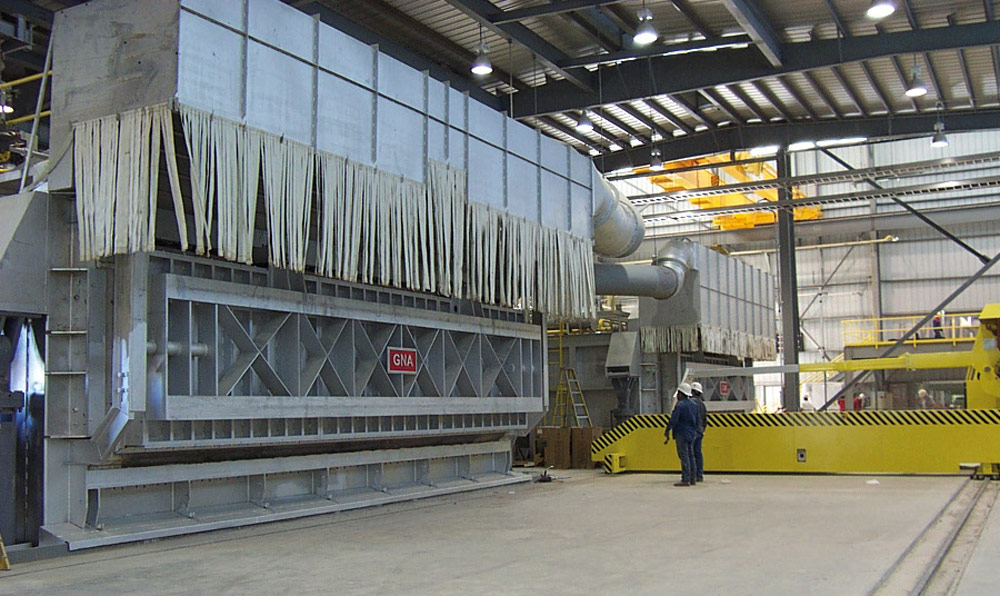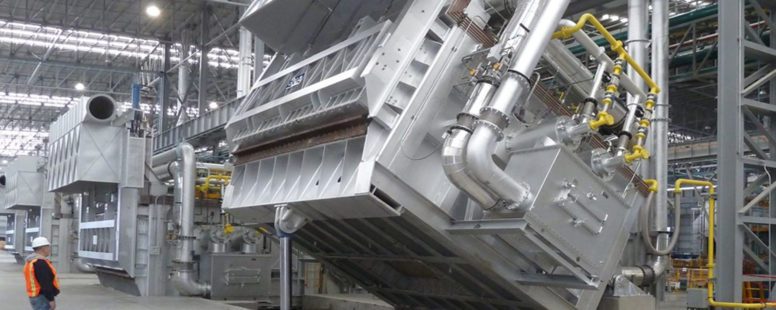GNA alutec inc
EBNER.blog | Ted Phenix, GNA, Canada
GNA alutech inc.
The specialist for recycling furnaces and autonomous casting solutions.
In June, 2019, the EBNER GROUP acquired a majority share of the Canada-based company GNA. GNA was founded 37 years ago by Ted Phenix in Montreal, Canada, and is an equipment supplier to the aluminum industry.
We mainly provide equipment for casthouses, such as melting furnaces for both clean and contaminated scrap, casting furnaces and homogenization furnaces, but are also the market leader in cathodes for the primary alumi- num industry. Our main market is North America, though we have also supplied customers in China, the Middle East, Europe, India and South America.
An extensive description of GNA and its history was already provided in the last issue of the HICON® Journal. In this article we would like to highlight the developments GNA has made in two specific areas of our portfolio. These are our ‘bread and butter’ products, currently lead- ing the way in reliability and performance at our client’s plants.
GNA has developed furnaces for melting (light) clean and contaminated scrap, including a single chamber furnace for painted profiles and chips. For chips, we use either a metal pump, like an EMP, or a side well with a separate mechanical pump to ingest the chip feed and make sure chips are submerged beneath the bath surface as fast as possible.
Since Gautschi has also recently developed similar technologies, GNA and Gautschi are working closely together to further develop this furnace type.
The GNA furnace is equipped with a specific combustion mode that includes oxygen injection into the melting furnace atmosphere at a specific time and under specific conditions monitored and controlled by the furnace PLC system.
This process allows the fumes from burning the paint or other similar contaminant to be in the furnace without the requirement for an external oxidizer or incineration process. Exhaust flue gases are monitored for oxygen content and when a specific level is reached, “fume destruction mode” is turned off and the furnace combustion system automatically returns to normal melting mode. Contaminant levels of up to 5 % can be successfully treated in the furnace with no ill effect on metal quality or refractory condition. Melt rates of up to 18,000 kg/h and more are currently achieved at various plants throughout the US and Mexico.
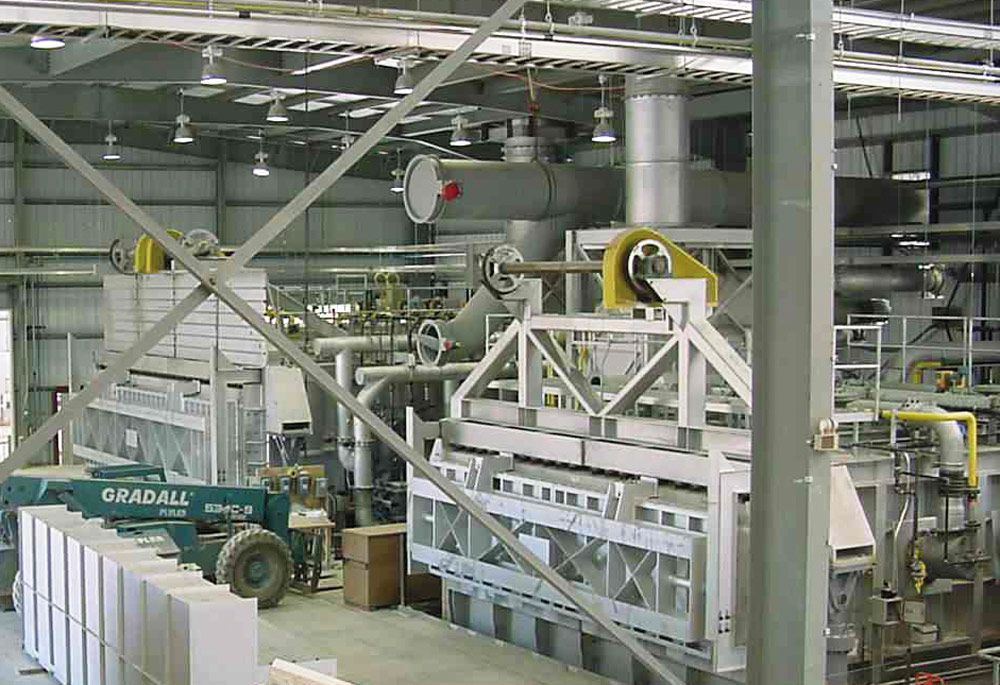
GNA has developed our own multi-chamber furnace for recycling contaminated scrap, such as castings coated with grease and oil, heavy section painted profiles, sheets, and even coils contaminated with rolling oil with contamination levels up to 5 – 7 %. Once again, GNA and Gautschi are working together in using the multi chamber concept for a continuous casting operation using a melting/casting furnace.
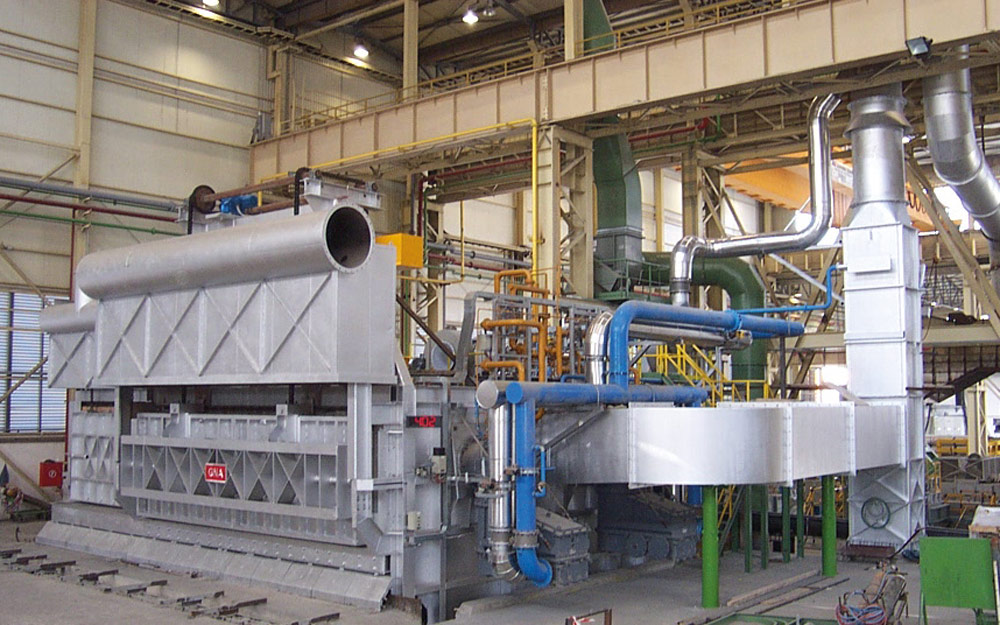
GNA has taken over the marketing and sales of a tiltable rotary furnace (TRF) for heavy contaminated scrap, dross and other forms of aluminum scrap. As the furnace has a door opening with a diameter of 2100 mm, GNA is now working together with specific clients and starting dis- cussions on using the TRF to melt scrap coils.
The process used in the TRF furnace is based on using salts that bind to organic compounds in the scrap. This avoids excessive burning of the aluminum as the high amount of contamination combusts. GNA has designed the furnace in such a way that easy loading and operation is combined with high flexibility, as there are a wide variety of raw materials that can be processed. Specific fuel consumption varies with the type of cold charge, but typical consumption numbers are less than 50 m3/t.
With these three types of furnaces in our portfolio, GNA can offer a wide range of possibilities to the aluminum recycling industry.
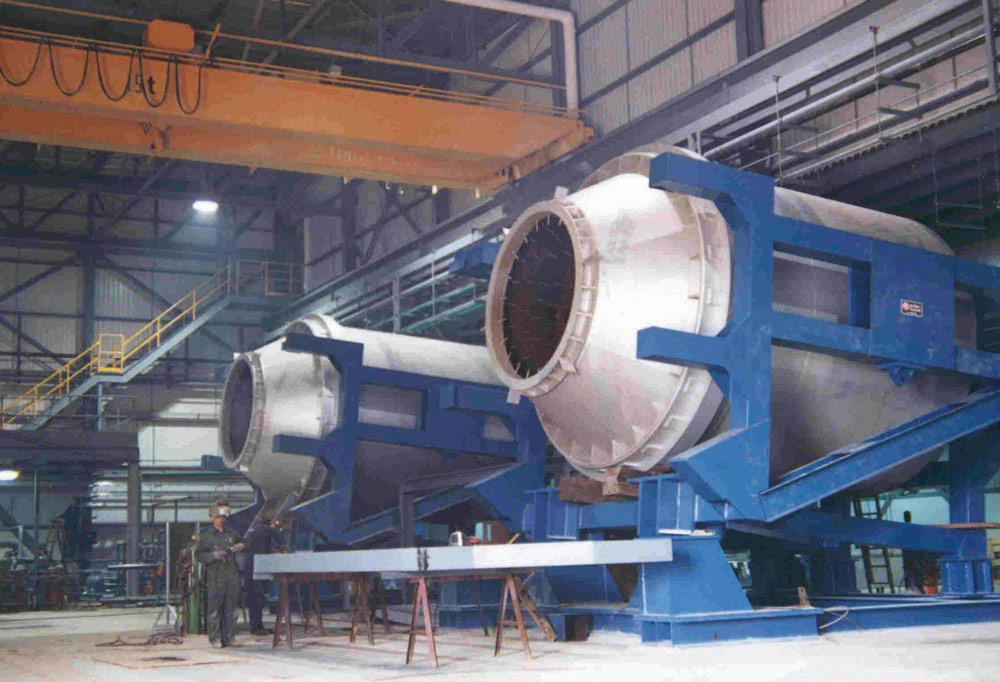
Over the last several years, GNA has been working together with a customer to implement a new and revolutionary concept for operating a casthouse in “hands free” mode. In this concept, the majority of the operations have been automated and are controlled by a unified central control system. This provides a very important safety improvement over typical operations, where operators are constantly interacting with a hot furnace and in close proximity to charging, skimming, alloying and other activities involving molten metal. No manual intervention from operators is required close to the furnaces or cast- ing machine, and the role of an operators is now more that of an observer.
The basic idea was developed by Kaleb Wright, now the CTO of GNA, supported by Ted Phenix. Working in close cooperation with the customer, it has now been installed as a part of a scrap melting operation in the southern US, using GNA furnaces.
All operations which normally require manual intervention or a visual check near the furnaces have been automated and integrated in a single operating production line. This includes the loading of cold metal into the melting furnace, dross removal at the furnace bath, the addition of alloying elements, temperature control, and the automatic transfer of molten metal to the holding furnace.
This plant is currently evaluating the process of integrating an automatic metal sampling system from another supplier and the addition of a new skimming machine. If these two systems can operate autonomously, the upgrades would allow this casthouse to operate fully automatically. Once all tests have been completed at this casthouse in the US, GNA will be ready to offer this solution to the world – including customers of Gautschi and HPI.
While this innovation does not drastically reduce the amount of personnel needed, it transforms their job from handling to continuous improvement and monitoring. It reduces variability in the process, resulting in faster cycle times, less variation in alloying, better dross removal practice and lowers the potential for operator-induced error overall.
